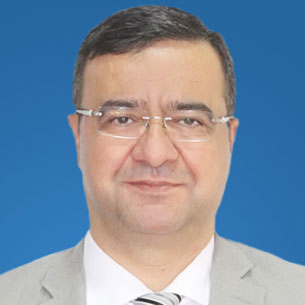Meeting
2020 ASCO Virtual Scientific Program

Oncology Department, King Abdulaziz Medical City, Ministry of National Guard Health Affairs, Riyadh, Saudi Arabia
Abdul Rahman Jazieh , Huseyin Cem Onal , Daniel Shao-Weng Tan , Ross A. Soo , Kumar Prabhash , Amit Kumar , Reto Huggenberger , Stephen Robb , Byoung Chul Cho
Background: Stage III NSCLC is a heterogeneous disease requiring a multimodality approach. We conducted a global study to characterise the patients (pts), treatment patterns and their associated outcomes for this disease in a real-world setting in the pre-IO era. Methods: KINDLE is a retrospective, multi-country, multi-centre study capturing data on patient and disease characteristics, treatments and outcomes. The study included pts with stage III NSCLC diagnosed between January 1st, 2013 and December 31st, 2017 and with at least 9 months of documented follow-up. Descriptive statistics were used to describe patient demographics, disease characteristics and treatment modalities. Inferential statistics was used to correlate various clinical and treatment variables with progression free survival (PFS) and overall survival (OS). Results: 3151 patients were enrolled at 125 centres in three geographical regions; 1046 pts in Middle East and North Africa, 1874 pts in Asia and 231 pts in Latin America. Median age was 63 years (range 21-92); 76.5% were male; 69.2% with a smoking history; 55.9% were staged as IIIA (AJCC 7th ed.); 53.7% had adenocarcinoma and 36.6% squamous cell, and 31.7% were known to have an EGFR mutation. 21.4% of patients underwent curative surgical resection. First line therapy included more than 25 different regimens, the most common being concurrent chemo-radiotherapy (cCRT) in 29.4%, chemotherapy (CT) alone in 17%, sequential chemo-radiotherapy (sCRT) in 10.4%, and radiotherapy (RT) alone in 8.5%. Median PFS for the whole cohort was 12.5 mos (95% CI; 12.06 – 13.14) and median OS 34.9 mos (95% CI; 32.00 – 38.01). Stage IIIA patients who were eligible for and underwent surgery + CT, had longer OS than patients who did not undergo surgery, receiving other treatments. Non-surgical approaches included CT, RT, and CRT. In stage IIIB, OS was significantly improved for cCRT vs. CT alone (p = 0.0015) or RT alone (p = < 0.0001) or sCRT (p = 0.0216). Improved survival was observed with sCRT compared with RT alone and chemotherapy vs RT alone. Conclusions: KINDLE, a large multi-country observational study, reveals the diversity of treatment practices that exist in stage III NSCLC and provides insights on the outcomes in a real-world setting. The unmet medical need remains high and approaches are required to optimize patient outcomes including implementation of guidelines, physician education and improved access to innovative medicines and quality care.
Disclaimer
This material on this page is ©2024 American Society of Clinical Oncology, all rights reserved. Licensing available upon request. For more information, please contact licensing@asco.org
2020 ASCO Virtual Scientific Program
Poster Session
Lung Cancer—Non-Small Cell Local-Regional/Small Cell/Other Thoracic Cancers
Lung Cancer
Local-Regional Non–Small Cell Lung Cancer
J Clin Oncol 38: 2020 (suppl; abstr 9043)
10.1200/JCO.2020.38.15_suppl.9043
9043
236
Abstract Disclosures
2023 ASCO Annual Meeting
First Author: Benjamin Besse
2024 ASCO Annual Meeting
First Author: Dae-Ho Choi
2023 ASCO Annual Meeting
First Author: Amin Nassar
2023 ASCO Annual Meeting
First Author: Dina Oksen